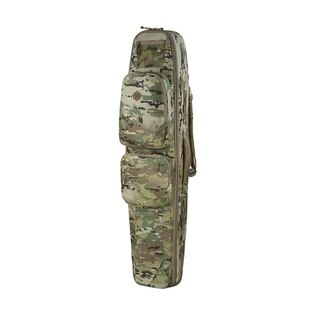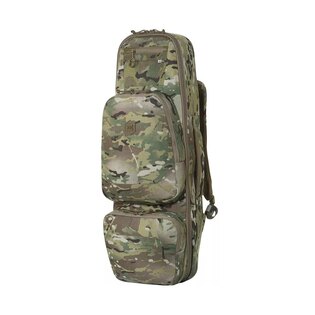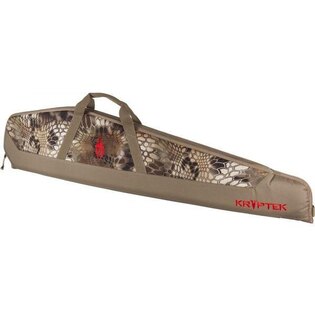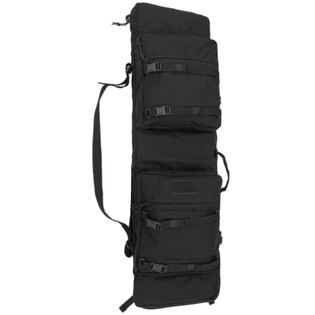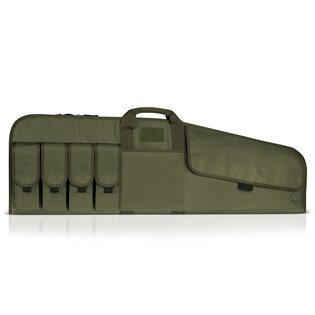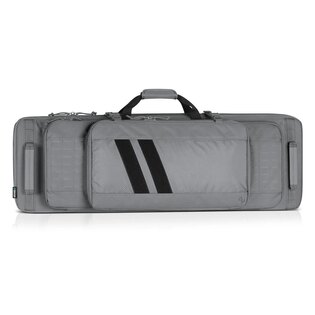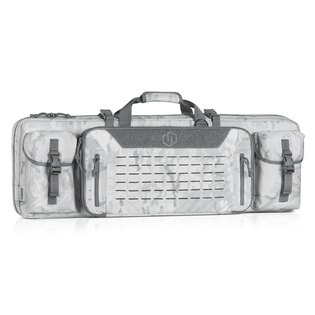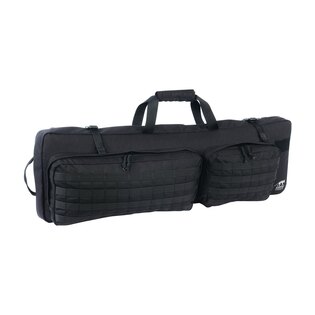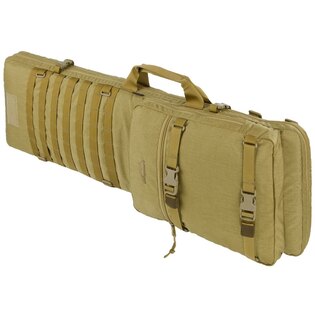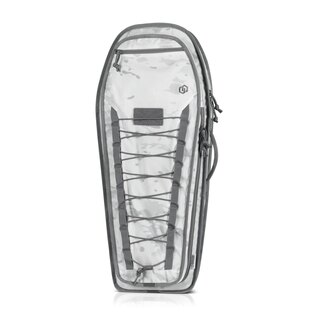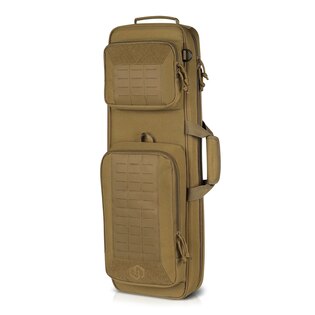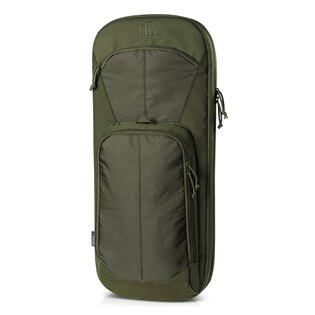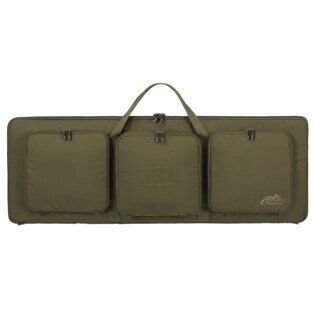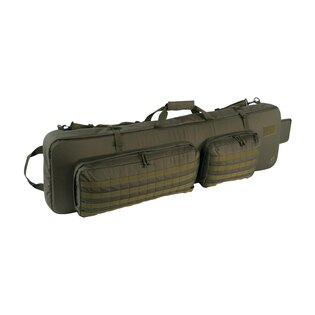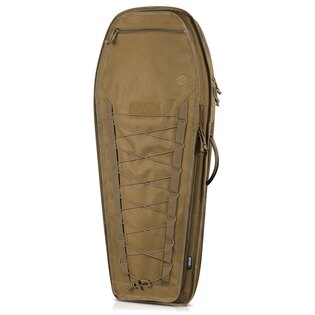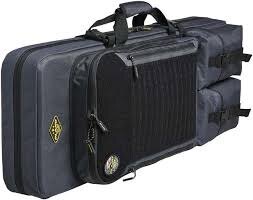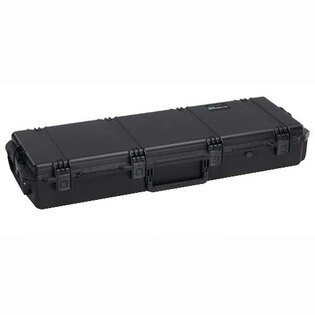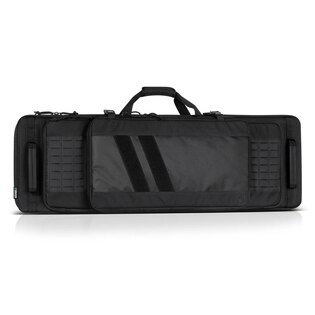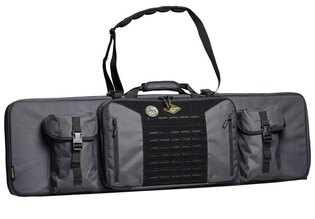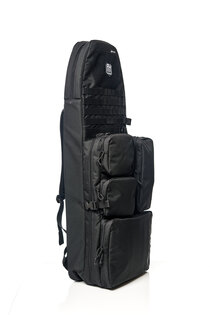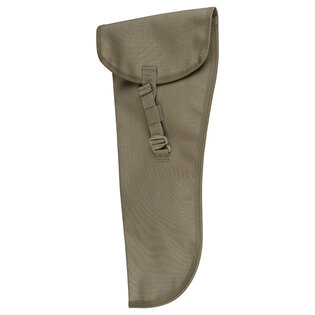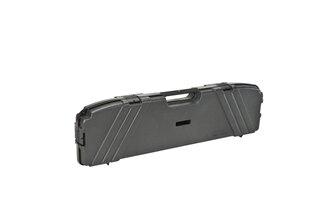The White Death: The Sniper Legend of the Winter War
The White Death is not just a legend. Behind this story is a real person, Simo Häyhä, who was driven from his homestead by a vicious enemy attack and who vowed that his ancestral land would one day return to Finnish territory. Come read the story of incredible talent and determination that became a symbol of resistance against Soviet aggression.
Young Simo Häyhä
Simo was born in the small town of Rautjärvi, which was located near the border with the Soviet Union. Simo had four brothers, brother Antti fell in the civil war in 1918 and another brother Tuomas died of heat stroke while building an extensive road. From a very young age, Simo devoted himself to work within the homestead and various related activities. In his spare time he was engaged in fishing and hunting.
Hunting was one of his greatest hobbies. He and his brothers often went into the forest and hunted everything possible, but best of all they practiced their accurate aiming while hunting squirrels. In his youth, Simo decided to follow in his father's footsteps. After successfully mastering general school, he wanted to become a farmer, and therefore did not continue his studies at secondary school.
Entry into military service
At the end of 1925, Simo Häyhä began his fifteen-month military service with the 2nd bicycle battalion in Raivola. The young recruit had no problem with military training, as he was used to physically demanding work on the farm. The cycling battalion was relatively lightly armed and the main prerequisite was understandably high mobility and a sense of orientation.
The soldiers thus continuously trained in physical fitness and reconnaissance of areas threatened by the enemy. Simo himself recalled that no one managed to gain weight during the training. Simo left the non-commissioned officer school with the rank of private first class and spent the rest of his military service with the 1st bicycle battalion.
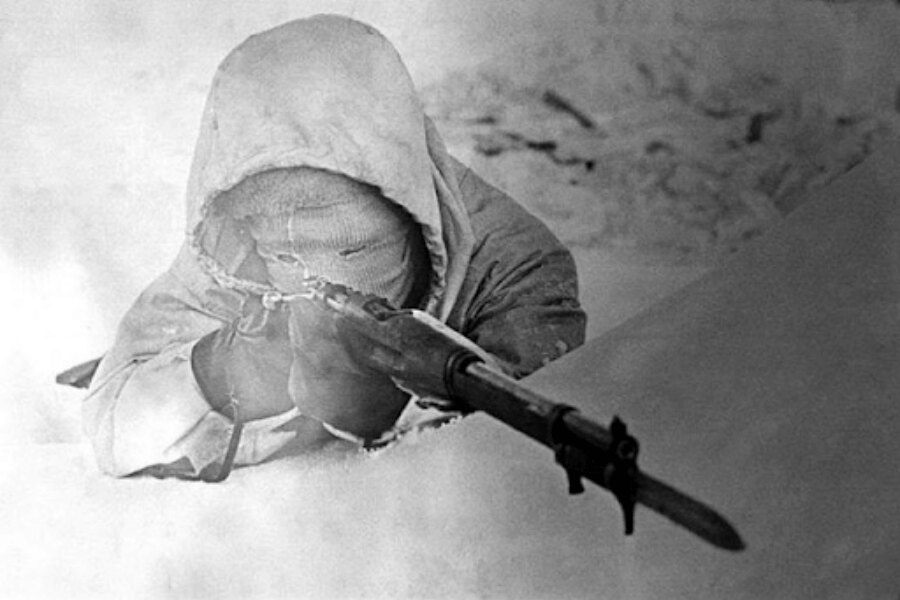
Winter War sniper legend Simo Häyhä. Among his great strengths for sniper work were his great eyesight, patience and small height.
First encounter with the Mosin-Nagant rifle
Immediately after completing his military service, Simo joins the Civil Guard in Rautjärvi, where he meets his future partner for the first time – a Mosin-Nagant rifle model 1891, which was in service with the Finnish army since 1918. Simo excelled in shooting from an early age and he already showed his excellent aiming skills at championship races, where he shot 5th place without any preparation. Since then, he regularly practiced and improved in shooting. Not long after that, his abilities began to be talked about even among the commanders of the Civil Guard.
Simo's arsenal
Many people think that Simo only excelled with the Mosin rifle, but that is not the case. He was just as dangerous with the Suomi M 31 submachine gun.
Mosin-Nagant Model 1891 (M 28)
The original Russian rifle underwent a number of modifications in Finnish hands. The sights of model 1891 rifles were marked in arshins (Russian system of measurement), for better orientation, the Finns added a metric scale on the right side of the sight, which gradually increased every hundred meters. In addition, the armory in Tikkakoski supplied the weapons with new barrels, which were more massive and slightly shorter compared to the original barrels.
The front sight has also been modified, the Finns have also customized it by modifying the covers into a lug shape. Rifles modified in this way were usually designated M 28 and were intended for units of the Civil Guard or the Finnish militia.
Suomi M 31
The Suomi M 31 is a Finnish submachine gun from the workshop of the famous designer Aimo Lahti, the production of which began in 1931 and continued until 1944. The submachine gun was characterized by excellent quality, durability and reliability, even in extremely cold conditions. A big advantage was its long barrel, which made shooting from it much more accurate than other contemporary submachine guns. The submachine gun was primarily intended to "clean" trenches from the enemy, in which, of course, classic repeating rifles could not be used. Simo Häyhä quickly took a liking to the submachine gun and immediately started going through shooting competitions with it.
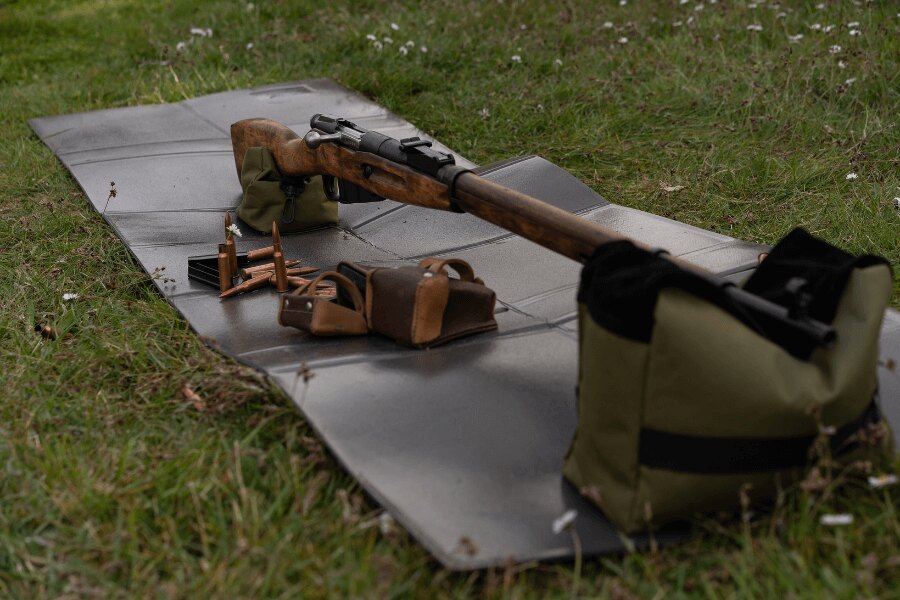
The Mosin-Nagant model 1891 rifle was in service with the Finnish army since 1918.
The Winter War
Unbeknownst to Simo, his long training was soon to come in handy. On November 30, 1939, without any declaration of war, the Soviet Union invaded the territory of Finland. It justified its aggression by the need to protect the borders, especially in the Leningrad region. Despite the clear superiority of forces, the tenacious Finns successfully defended themselves for a long time and caused heavy losses to the Red Army. After the initial setback, the Soviet forces subsequently regrouped and eventually overcame the Finnish defenses. But the Finnish army has shown the whole world that it definitely does not pay to underestimate the opponent.
The beginning of a sharp conflict
After the invasion of Finland on November 30, 1939, Simo was assigned to Colonel Svensson's 12th Infantry Division, which operated around the Kollaa River. He remained in this area until March 6, 1940. He went hunting almost every day.
I'm going hunting!
Simo fought a little in his own way. At dawn, armed with his trusty Mosin-Nagant rifle, he made his pilgrimage to the vicinity of enemy lines. Thanks to the rifle without optics, he avoided disclosure and always operated in a white camouflage coverall with a hood. Among his great strengths for sniper work were his great eyesight, patience and small height. The brave sniper was only 152 cm tall, so he fit comfortably into a series of smaller trenches, from which he had a great view and at the same time did not have to crouch too much.
He usually looked for his victims in no man's land. He fired several rounds at the unsuspecting Soviet soldiers and carefully left the area before any artillery salvo. His tactics may seem primitive, but they were extremely effective. In three months, he eliminated 259 Red Army soldiers in this way. Which works out to about 3 enemy soldiers killed per day.
But as we mentioned above, the M 28 sniper rifle was not the only tool of the Finnish hero. With the help of his favorite M 31 submachine gun, he managed to kill another 250 Soviet soldiers. In total, he kept a respectable score of 500 enemies killed and easily became the most effective sniper of all time.
What was the key to Simo's success?
Simo was a skilled warrior who had learned to hunt and fight long before war broke out. But in addition, he had a number of skills and abilities that were of course beneficial to him. We have compiled for you some points that made him an extremely successful sniper.
- Great eyesight: Hits the enemy at 400 to 600 meters with no problem.
- Mechanical sights: An essential condition, thanks to which he could not be betrayed by the glare of the optics and which ensured a smaller silhouette, and thus a lower risk of disclosure.
- Multiple layers of clothing: Extending the time he could wait for an enemy.
- Careful choice of location: A fallen trunk or overhanging tree branches meant the perfect position.
- Breath disguise: Simo would put snow in his mouth to prevent the enemy from seeing his breath.
- Patience: Simo waited patiently for several hours before he had the opportunity to shoot.
Facing death
After several dozen were killed, fear began to spread among the Soviet soldiers. Everyone has heard rumors of the White Death, which sneaks inconspicuously near the enemy camp and waits for the right opportunity to attack. It is therefore not surprising that the Soviet command offered a high reward for the killing of the Finnish sniper. With the increased attention, Simo's luck slowly began to run out and he found himself under enemy fire more and more often.
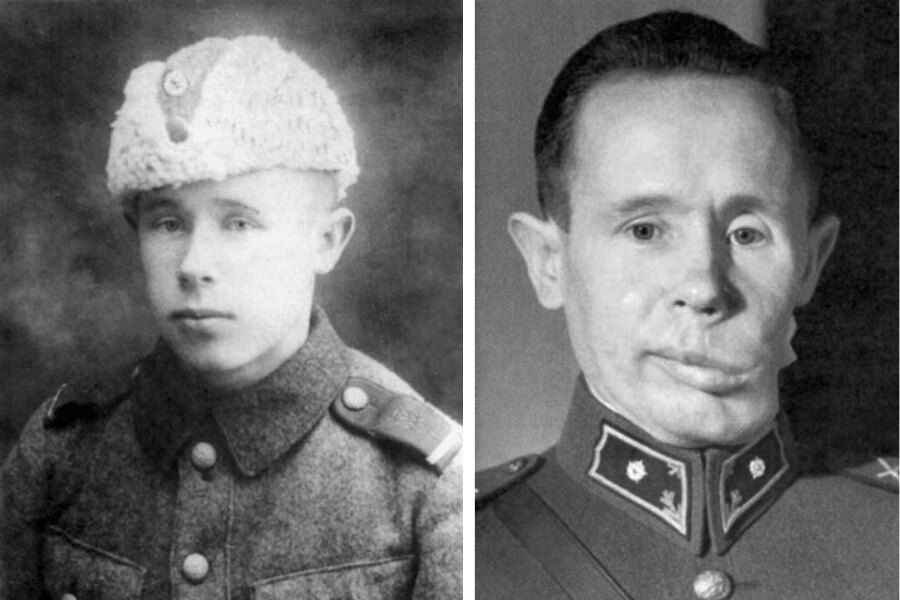
Simo Häyhä was hit in the face by a shrapnel bullet.
On March 6, 1940, the section of the front where Simo served woke up to a massive Soviet frontal attack. The 34th Rifle Regiment suffered terrible losses during the enemy's assault. Even the White Death did not escape injury. Simo was hit in the face by a shrapnel bullet, which fractured his jaw and changed his appearance forever.
The legendary sniper was dragged from the battlefield to safety by his brave friends. Simo fell into a week-long coma as a result of his injuries and only woke up when the conflict was coming to an end. Despite their best efforts, the heroic defenders failed to prevent a humiliating truce, during which the Soviet Union took a bite out of a large chunk of Finnish territory.
The end of military career
After the war, Simo's farm unfortunately found itself on the wrong side of the border. It was extremely difficult for him that, despite the heroic defense of the borders, it was ultimately not possible to keep his estate on Finnish territory. In 1948, he settled on a small farm in Ruokolahti by Lake Välkjärvi, where he devoted himself to hunting and dog breeding in a quiet and secluded place. Towards the end of his life, Simo moved closer to the people to a tenement in Ruokolahti village, from where he had a wonderful view of Lake Saimaa. He lived in a care and rehabilitation center, where he was surrounded by his fellow veterans. Until his last moments, he believed that Karelia would one day return to the hands of the Finnish people.
Readers are further interested





























































































































